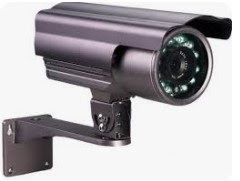IP (Internet
Protocol) and HD (High Definition) are terms that describe different aspects of
security cameras. Here's a breakdown of their differences:
1. Resolution:
HD Camera: HD cameras typically refer to cameras that offer
high-resolution video, usually starting from 720p (1280 x 720 pixels) and going
up to 4K (3840 x 2160 pixels) or even higher. These cameras provide clear and
detailed images.
IP Camera: IP cameras
can come in various resolutions, including HD resolutions. However, the term
"IP camera" specifically refers to cameras that connect to a network
(usually via Ethernet or Wi-Fi) and transmit video data over the Internet
Protocol. IP cameras can support HD resolutions and beyond.
2. Connection and Protocol:
HD Camera: HD cameras can be analog or digital, but they
typically use traditional analog connections (like coaxial cables) or digital
connections (like HDMI) to connect directly to DVRs or monitors.
IP Camera: IP cameras exclusively use network connections to
transmit video data. They connect to a local network (LAN) or the internet,
allowing users to access the footage remotely. IP cameras utilize the Internet
Protocol (IP) for communication, enabling integration with other network
devices and systems.
3. Compression and Encoding:
HD Camera: HD cameras may use various compression formats
(e.g., H.264, H.265) to reduce the size of video files while maintaining
quality. Encoding and compression are typically handled within the camera or by
the connected recording device.
IP Camera: IP cameras encode and compress
video data before transmitting it over the network. They often support advanced
compression standards for efficient data transmission and storage.
4. Integration and Features:
HD Camera: HD cameras are often standalone
devices or part of closed-circuit systems (CCTV) that connect directly to DVRs
or monitors. They may have limited integration capabilities with other systems
or devices.
IP Camera: IP cameras
offer more extensive integration options due to their network connectivity.
They can integrate with various software platforms, video management systems
(VMS), and other network devices. Additionally, IP cameras often come with
advanced features such as motion detection, analytics, and remote access.
5. Scalability and Flexibility:
HD Camera: HD cameras can be part
of scalable CCTV systems, but expanding such systems may require additional
wiring and infrastructure.
IP Camera: IP cameras are more
scalable and flexible due to their network-based architecture. It's easier to
add new cameras to an existing IP network without significant changes to
infrastructure. Additionally, IP cameras offer more flexibility in terms of
placement and setup.








0 Comments